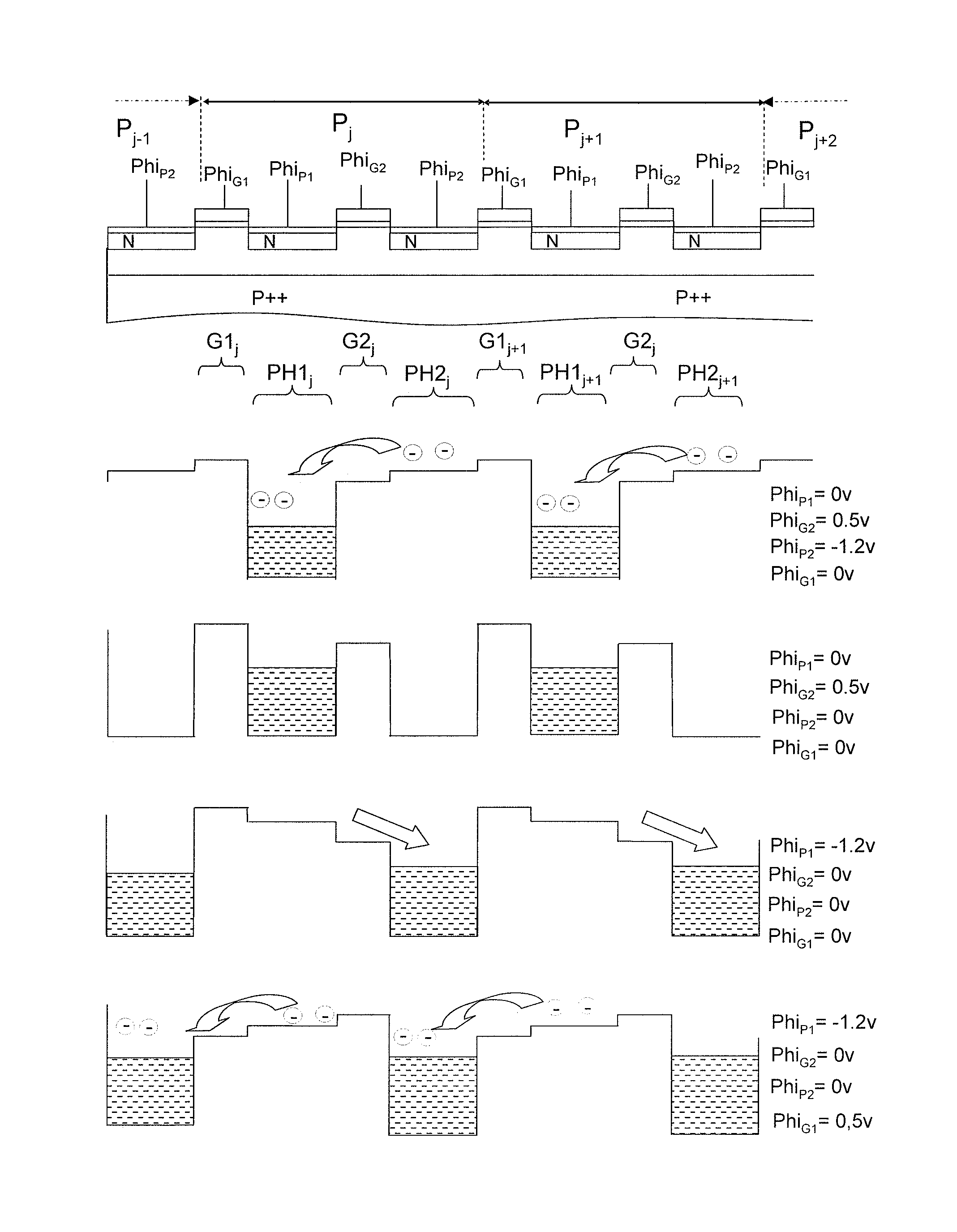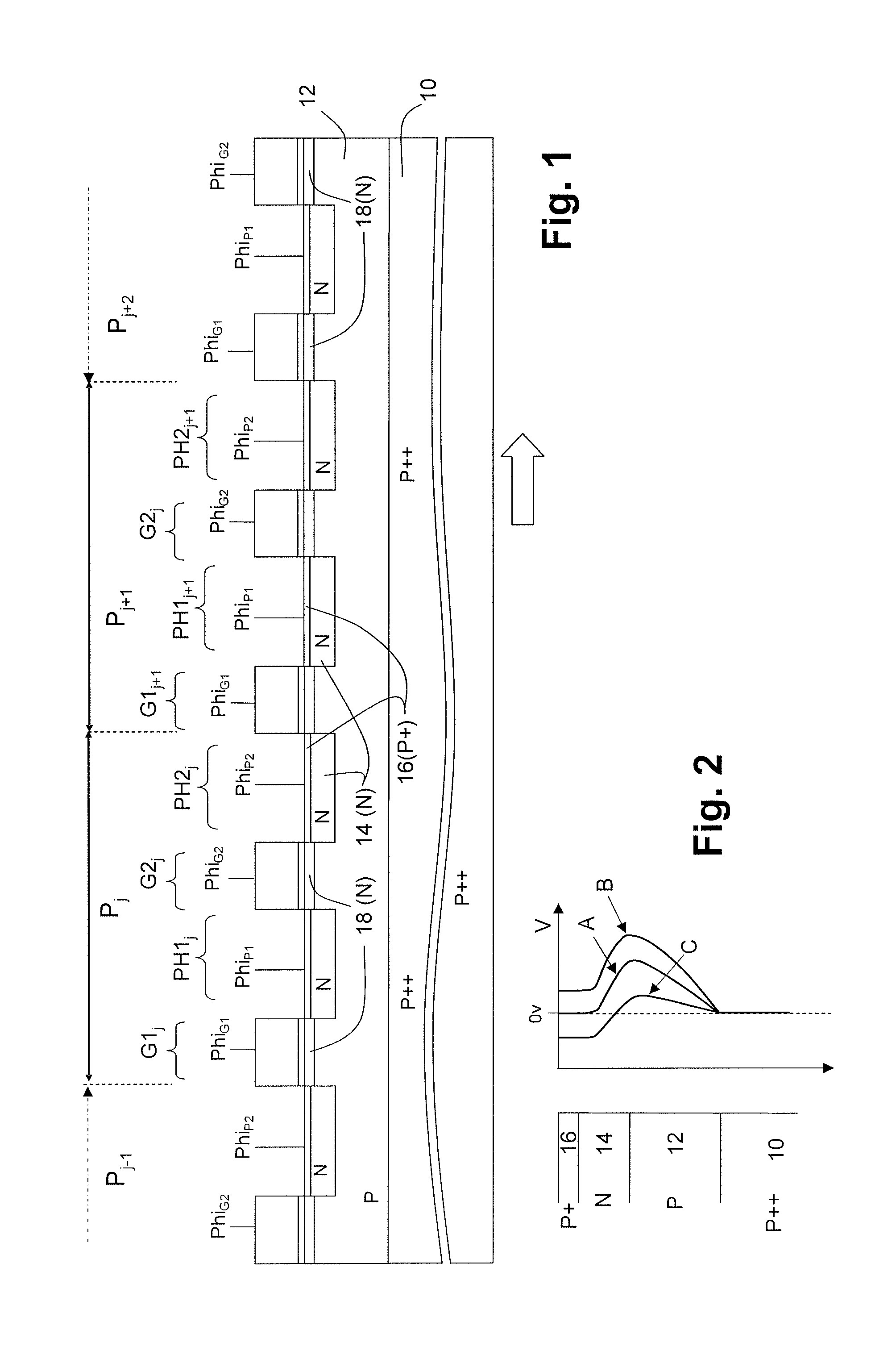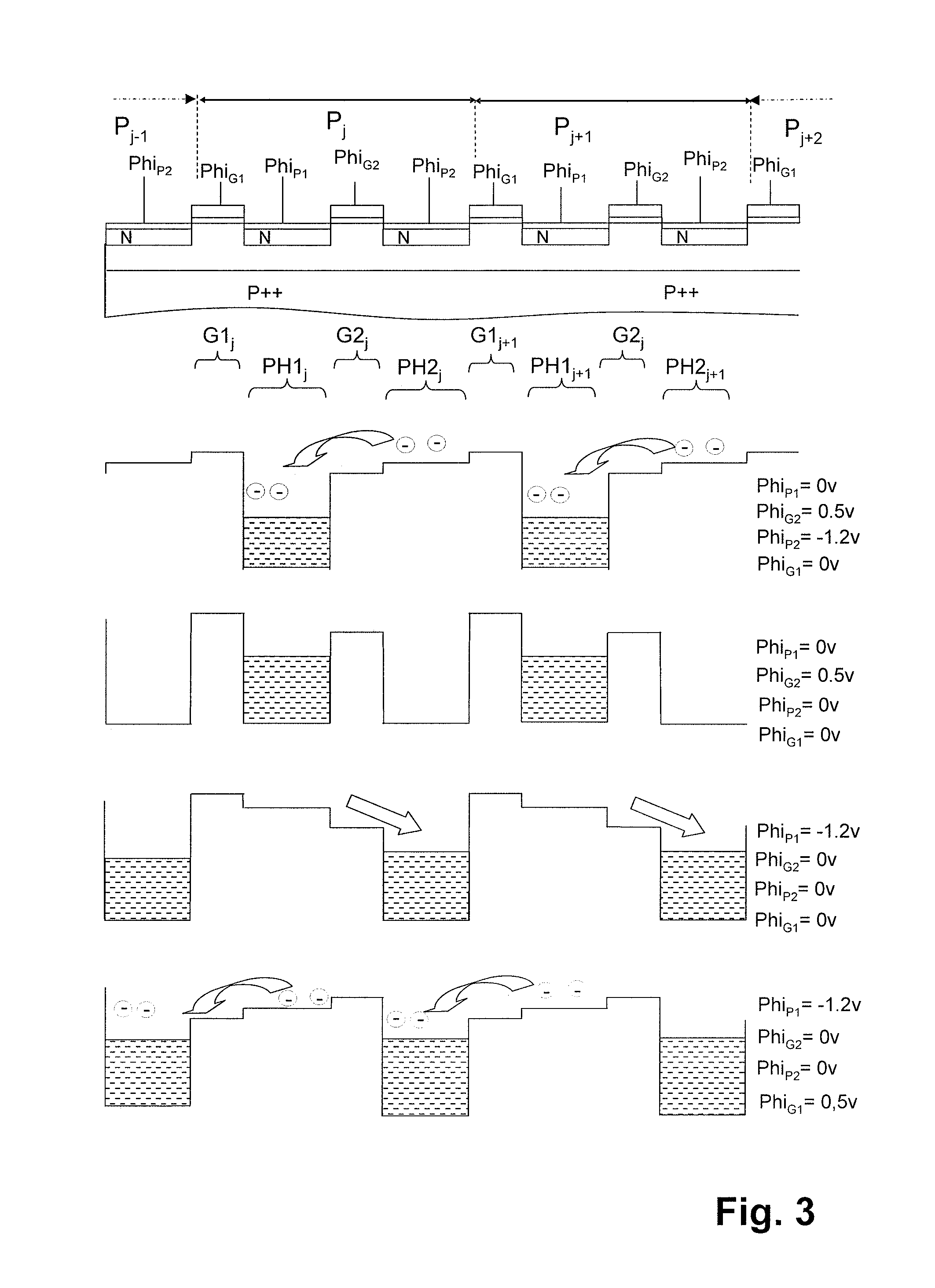Multilinear image sensor with charge integration
a multi-linear, image sensor technology, applied in the field of linear tdi (time delay and integration) image sensors, can solve problems such as the inability to bring the surface regions
- Summary
- Abstract
- Description
- Claims
- Application Information
AI Technical Summary
Benefits of technology
Problems solved by technology
Method used
Image
Examples
Embodiment Construction
[0051]The cross-sectional view of FIG. 1 shows several successive pixels, of one and the same column, in a image sensor array comprising N adjacent rows each of P pixels, the array being intended to operate in TDI mode. Each row of rank j (j=1 to N) successively reads one and the same image row during a synchronized scan of the image relative to the array in the direction perpendicular to the direction of the rows. The charges of the pixels of the same rank i (i=1 to P) of the various rows correspond to the observation of one and the same image point and these charges are accumulated in order to obtain a larger signal (for a given exposure time of each row of pixels) than if only one row saw the image, improving the signal-to-noise ratio.
[0052]Essentially, the pixels Pj and Pj+1 of rank j and j+1 respectively one column have been shown.
[0053]The pixels are formed in a semiconductor substrate 10 the top part of which is an lightly doped epitaxial semiconductor layer 12. In this examp...
PUM
 Login to View More
Login to View More Abstract
Description
Claims
Application Information
 Login to View More
Login to View More - R&D
- Intellectual Property
- Life Sciences
- Materials
- Tech Scout
- Unparalleled Data Quality
- Higher Quality Content
- 60% Fewer Hallucinations
Browse by: Latest US Patents, China's latest patents, Technical Efficacy Thesaurus, Application Domain, Technology Topic, Popular Technical Reports.
© 2025 PatSnap. All rights reserved.Legal|Privacy policy|Modern Slavery Act Transparency Statement|Sitemap|About US| Contact US: help@patsnap.com



